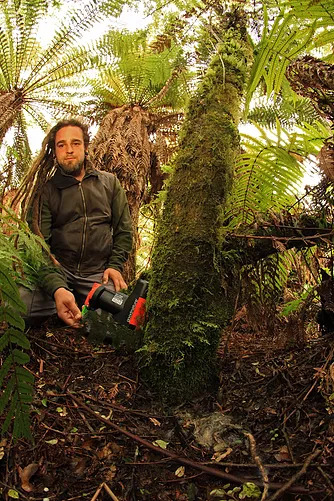People and pests


Daniel servicing a goodnature trap. Innovative self resetting rat/stoat traps.
“Last, loneliest, loveliest. Most exquisite apart.” So said Rudyard Kipling when he visited New Zealand.
Kipling visited New Zealand for 18 days in 1891 and continued to correspond with friends he made on that trip for most of his life. His words live on.
New Zealand was the last large land mass on earth to be inhabited by people. For 80 million years it was a land of birds, reptiles and ancient forests far away from the rest of the world.
The isolation was such that the only terrestrial mammals were a few species of primitive bats. 85% of the landmass was covered in endemic vegetation -from wondrous wetlands to bizarre alpine plants and towering forests in between.
However, along with people along comes change.
Today we have a mere 23% of our original vegetation left largely caused by fire for deforestation to create farms. Alongside such extreme loss of habitat people bought with them a suite of new mammals that threaten the remaining wildlife. Trapping and poisoning are mainstays of conservation in New Zealand. Across the country armies of people work hard to arrest the decline of our unique species. We are achieving notable success in our reserves and sanctuaries but much work remains to be done!
Foris is doing our little bit by operating 40 goodnature traps but our most important contribution to conservation is the advocacy work we do with 3500 students each year via our education program.
